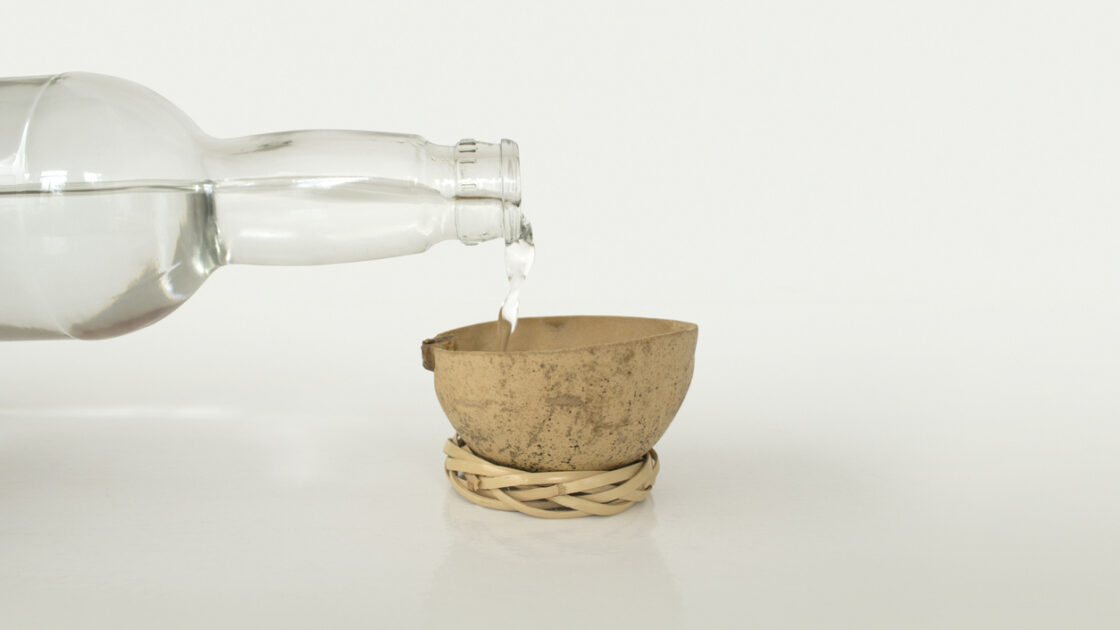
First things first, what is mezcal? Mezcal is tequila’s cooler, trendier cousin. Although both liquors are derived from the agave plant, that’s where their relationship ends. For the health and wellness-conscious, mezcal may even be a cleaner sip.
Here’s everything you need to know about the south-of-the-border liquor the cool kids are drinking.

What Is Mezcal?
Mezcal is small-batch, smokey and complex tasting liquor hailing from Mexico. Like tequila, mezcal is distilled from the agave plant. Unlike tequila, which is distilled from only the blue agave, mezcal can be distilled from more than 30 varieties of agave, including the blue agave. Mezcal is the drink of the moment and the wellness crowd *raises hand* is super into it. Much like kombucha’s moment in the sun, bringing for all sorts of surprising cocktails (like our refreshing kombucha spritzer), we think it will stick around for a while.
Want to stay in the know with all things new and wellness? Sign up for the newsletter for well-researched, non-toxic living guidance, smart wellness advice, and cravable recipes.
Mezcal Vs. Tequila
Mezcal and tequila come from different regions of Mexico as well. About 80 percent of mezcals are made in Oaxaca, but can come from eight other regions throughout the country. Tequila is made in only five specific regions in Mexico.
Like tequila, mezcal is distilled from the juices of the pressed core of the agave plant, the pina. With tequila, the pina are commonly cooked in large, stainless steel industrial cookers to maximize production. The cooked pina are then crushed to release the juice, fermented, distilled, aged, and bottled to produce everyone’s favorite margarita mixer.
Mezcal production, on the other hand, is a labor of love. Pina are fire-cooked in small underground, earthen pits typically lined with volcanic rock.
Small batches of pina are piled into the pits, covered with earth, and allowed to smoke for days on end. John McEvoy, author of “Holy Smoke! It’s Mezcal” and blogger of MezcalPhd explains “this underground ‘oven’ now smokes, cooks, and caramelizes the pina over a multi-day cooking process,” which creates mezcal’s characteristic smoky flavor.
The cooked and unearthed pina are then crushed with a tahona, an ancient-looking stone wheel pulled by a horse or donkey, to extract the juice. The cooked agave juice is then fermented and distilled (typically in clay pots or wooden barrels), and bottled. This small-batch, artisanal production explains for the high price tag of many bottles of mezcal.
Have you tried mezcal? Give us the scoop in the comment section below!
Is Mezcal Healthier than Tequila?
For purists, mezcal is cleaner than tequila.
According to the Tequila Regulatory Council, tequila must be made with at least 51 percent blue agave sugars and 49 percent sugars from other sources, which may include not-so-delicious fillers such as corn and grains. On the other hand, by law mezcal must contain 100 percent agave, leaving no room for anything artificial.
Sip responsibly, not just in alcohol consumption, but also in choosing what to drink. Mezcal can be considered cleaner and more pure than tequila, especially if the later is mixed with artificial sugar and way to many margarita mixers. When it comes to health, wellness, and alcohol, consider balance and sip in moderation – mezcal included.

How to Drink Mezcal
Mezcal can be added to cocktails with fresh herbs and lemon or turned into a spritzer with kombucha, but due to its complex flavor profile, the spirit is best sipped on its own.
What is this flavor profile? Although many consider the flavor of mezcal to be smoky, Lucas Ranzuglia, bar manager of San Francisco’s La Urbana restaurant, disagrees. “For some reason everyone calls mezcal smoky—but I think the word can be a bit misleading and overused” he notes.
“You’re not going to find flavors of wood burning or cigarette smoke in mezcal. It’s more about flavors like dry chiles, chipotle, some roasted bell pepper, leather, roasted coffee beans,” Ranzuglia notes.
“In typical artisanal mezcals, very slow, underground cooking will produce sweet and roasted notes like those of walnuts, peanuts, almonds, hazelnuts, cooked pumpkin, brown sugar, honey and caramel, among others,” writes Ivan Saldana Oyarzabal, author of “The Anatomy of Mezcal.”
Cooking processes, types of agave, and fermentation can also leave mezcal with spicy, floral, earthen, ashy, and sweet flavors as well.
So, how do you drink this complex spirit? Ranzugila notes, “In Mexico, they have an expression that mezcal is meant to be kissed—you’re supposed to sip it very slowly, allowing a connection with it.”
“They insist it should be something you share and drink with somebody else, not something you rush through. Traditionally it is served straight and at room temperature. Mezcal tends to be on the drier side, it is a good aperitif. It also works really well with Mexican food, too, so it’s great to order with your appetizer or salad.”
Sipped and savored, with a little smoke. Cheers!
P.S. Did you know? Organic Authority has its own nutrition and wellness shop to meet your needs and help you take control of your health. Shop clean supplements for energy, sleep, inner beauty for skin support, protein, workouts, pantry items and more. Shop The Organic Authority Shop now.
Read More on Organic Authority


